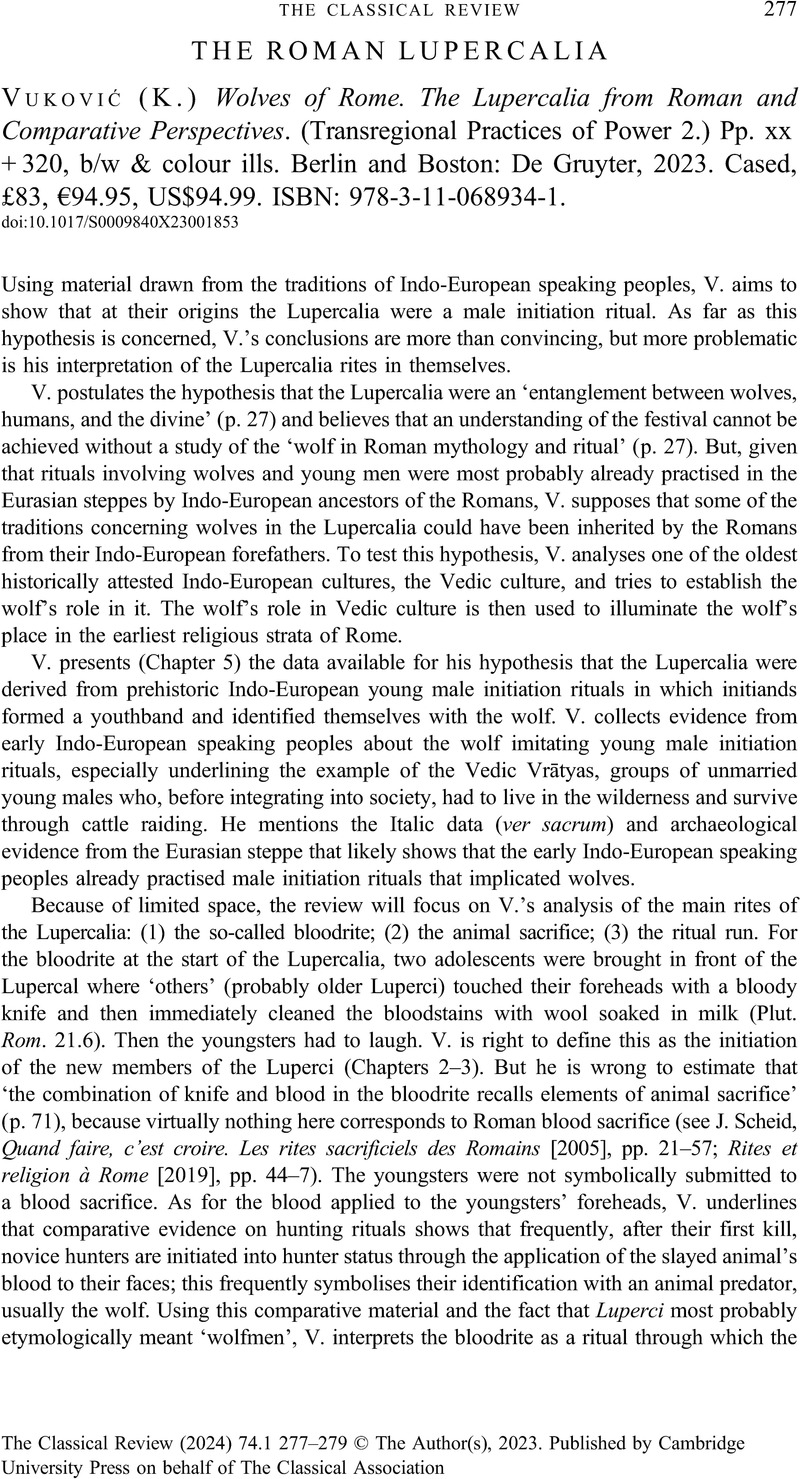No CrossRef data available.
Article contents
THE ROMAN LUPERCALIA - (K.) Vuković Wolves of Rome. The Lupercalia from Roman and Comparative Perspectives. (Transregional Practices of Power 2.) Pp. xx + 320, b/w & colour ills. Berlin and Boston: De Gruyter, 2023. Cased, £83, €94.95, US$94.99. ISBN: 978-3-11-068934-1.
Review products
Published online by Cambridge University Press: 04 September 2023
Abstract

- Type
- Reviews
- Information
- Copyright
- Copyright © The Author(s), 2023. Published by Cambridge University Press on behalf of The Classical Association
References
1 See especially the work by Briquel, D.: ‘Trois études sur Romulus’, in: Bloch, R. (ed.), Recherches sur les religions de l'Antiquité classique (1980), pp. 269–300Google Scholar; ‘Rémus mangeur d’exta: chaos primitif et monde de la cité’, in: M. Mazoyer (ed.), Ville et pouvoir: origines et développement (2002), pp. 209–17; ‘Deux histoires de jumeaux qui finissent mal: Romulus et Rémus, Jacob et Ésaü’, REL 91 (2013), 83–7; Romulus. Jumeau et Roi (2018), pp. 134–49. See also Vé, K.K., ‘La cité et la sauvagerie: les rites des Lupercales’, DHA 44 (2018), 163–79Google Scholar.



